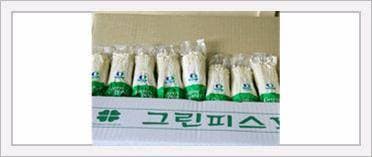
Green Peace
- Country / Year Established
-
 South Korea
/
South Korea
/
- Business type
- Others
- Verified Certificate
-
17


| Product name | Enoki Mushroom | Certification | - |
|---|---|---|---|
| Category | Mushrooms | Ingredients | - |
| Keyword | - | Unit Size | - |
| Brand name | - | Unit Weigh | - |
| origin | Stock | - | |
| Supply type | - | HS code | - |
Product Information
Functions
Flammulina velutipes(Velvent stem collybia or Gold needle mushroom winter mushroom.
This mushroom can be found all over the world in temperate areas from. From Australia to China, Korea, Africa, Europe and America. It is sometimes called the Winter mushroom, because it usually fruit in winter at temperatures below 10°C. Flammulina is collected in the wild in some areas in Europe and North America. Only the cap is considered suitable for consumption; the stalk is discarded. The wild specimens look quite different from the cultivated mushroom, because of light deprivation and the collar around the culture bottles, which forces the cultivated mushroom to from long stems. It is discussed in this book, because the marketing potential is considerable and the cultivation technique is similar to that of other wood-degrading fungi. Substantial commercial cultivation can only be found in Korea, Taiwan, Japan and China.
Flammulina ranked fourth in the total worldwide production statistics in 1983/1984 and 20th in the 2004 statistics, after the White button mushroom, Oyster mushroom, Shiitake, Rice straw mushroom and Auricularia, The cultivated winter mushroom have a very long stalk and a much lighter color than wild ones. The Asians favor this beautiful product and gave it the poetic name Gold needle mushroom, Enoki mushroom.
The stalk forms the main portion of the mushroom, and is artificially grown that long. It is not as tough as the stalk of the wild ones, and can therefore be eaten. It can be a winter corp, or year-round if air condition is available.
Material: Most Flammulina are cultivated in bottles, through plastic bags can also be used. The polypropylene bottle (800 to 1200ml)usually contains 600 g wet substrate. These bottles can stand about ten heat treatments. Glass bottles were used in the past. These break more easily, but can be reused many times. Plastic caps, providing aeration through filter paper, seal the bottles. These caps can also be reused, but the paper filter has to be checked for breakage regularly.
Enoki Mushroom information
For thousands of years, Eastern cultures have revered mushroom as Health Food. Recent studies reveal that mushroom has good medicinal effect against major adult disease.
- Treatment of certain types of cancer
- Boost immune system
- Coronary heart disease
- Lower blood cholesterol level
- Botanical Name : Flammulina velutipes
- Common Name : Enoki Mushroom (Winter Mushroom)
- Background Info : Cultivated for many years in the Orient.
- Description : Clusters of long white stems with small caps, Trim the bottom of the clusters.
- Taste : Sweet mild mushroom flavor
- Texture : Tender and crunchy
- Storage and Best Before : Keep refrigerated (0°C-1°C/about 30days.
- Preparation : Lightly rinse and trim the lower portion of the cluster.
- Serving suggestion : Serve raw on a salad or sandwich, Float as a garnish on top of soup. etc. meal...
Substrate materials : In Korea, Japan and Taiwan conifer sawdust, rice bran is used as well. But it has to be stacked to ferment for one month, wood sawdust 45% (properly moistened for at least several days) 45% ; rice bran 10-20% water content adjusted to 58% to 60% ; CaCO3 1to 3%. If hardwood sawdust is readily available.
Filling, holing and capping
In Taiwan and Japan specially designed machines arc available to fill and hole the bottles. The most advanced even cap fully automatically.
Machines for spawn preparation can also be used. Make sure the substrate is com-pressed in the bottles or bags. The caps have to be pressed firmly on the bottles. No airflow is allowed through seams or cracks in bottle or cap.
Sterilization
There will be quite a few microbes thriving in the old sawdust. Flammulina is not a strong competitor(unlike, for example, Oyster mushrooms), therefore the substrate has to be sterilized and not just steamed. Eight hours steaming at 95°C and one hour at 121°C under pressure are sufficient to sterilize the bottles. The procedures are in fact very similar to spawn production. Notice that the cylindrical form of the bottles allows the steam to reach each container.
Spawning
The bottles can be spawned as soon as they have cooled down to 20°C. The substrate is sterile and therefore very susceptible to contamination at this stage.
Perform spawning preferably in a clean room. The large-scale producers use machines that lift the bottles out of the trays and inoculate them one by one. The cap is lifted off, a small piece of spawn is laid inside and the cap is immediately replaced. Take precautions to prevent from contamination (refer to Spawn production).
Spawn run
The mycelium will cover the substrate in the bottles in 25 to 30 days. The optimal temperature for mycelial growth is 22 to 25°C, in commercial production the temperature in the densely packed spawn run rooms is kept somewhat lower : 18-20°C. After spawn run, the bottles are placed in a different in a different room for the in duction of primordia. All subsequent rooms are kept dark to obtain a white or yellow mushroom.
Primordia induction
The cap is token off and the old spawn is remover when the mycelium has colonised 90% of the substrate in the bottles. The surface is smoothened with a machine to get an even distribution of fruit bodies. The bottles are kept at 10-12°C in the dark to promote primordia formation. The relative humidity should be 80-85%. The moisture level is very important : too dry will lead to uneven fruiting, too wet will cause amber-coloured drops that reduce the quality of the crop. Primordia are formed within 10 to 14 days.
Controlling
A temperature of 10-15°C is efficient for primordia formation, but the temperature has to be lower during subsequent fruit body development to obtain a high-quality product with a firm texture.
To this end, the temperature is lowered to 3-5°C and some air flow is introduced within the room:3-5m/s. This will ensure firm, white and dry mushrooms. This stage (named 'control stage') lasts for five to seven days, until the stems reach a length of 2cm.
Growing
Now the temperature has to be raised a little to 5-8°C and the humidity should be 75-80%. This will stimulate development. A waxed paper or a plastic film is wrapped around the bottles to obtain long stems (Gold needles). If plastic bags are used as containers, then the upper part of the bag should be rolled upward to support the long stems.
Harvesting
When the stems are 13 to 14cm long, the mushrooms can be picked. The plastic can be picked together with the mushrooms and will be sorted out later. The first flush usually brings 250 to 300 per bottle. A second flush will take yet another 50 days, and yield only 60 to 80g per bottle but the quality is less. If air conditioning is expensive, then it is more profitable to grow only one flush. Up to four flushes can be harvested from plastic bags if the quality is less important. The quality is mostly determined by humidity and temperature, and by the number of fruit bodies growing in a bundle. This number declines as flushes proceed.
Pests and diseases
Cladobotryum variospermum (a cobweb mould) is at times very damaging to the cultivation of Flammulina. The pesticide PY-101(panmush) can control this and other harmful fungi. Other regular contaminants are the ones to be found in plastic bag cultivation of all other wood-degrading fungi : Trichoderma spp., Penicillium (if bags with plugs are used) and Neurospora.
Post harvest
The bundles are cleaned by cutting off the part which was attached to the sawdust substrate. Most Flammulina are sold fresh, some are canned. The mushrooms are remarkably robust, which is caused by the low temperature at which they grow; they are sometimes handled rather rough without visible damage to the fruit bodies.
B2B Trade
| Price (FOB) | Negotiable | transportation | - |
|---|---|---|---|
| MOQ | Negotiable | Leadtime | Negotiable |
| Payment Options | Negotiable | Shipping time | Negotiable |
- President
- Park Heejoo
- Address
- 246-2, Yangwon-ri, Iseo-myeon, Cheongdo-gun, Gyeongsangbuk-do, Korea
- Product Category
- Mushrooms
- No. of Total Employees
- 51-100
- Company introduction
-
Firstly, We at Green Peace would like to express many thanks for the kind support and advice of all customers, with high-tech experience and know-how accumulated for 22 years, Green Peace has continued promoting research and development(R&D) to improve the quality of Mushrooms, wide applications, convenience, reduction of energy and cost required for the mushroom facility. As a result, this company has exported these mushrooms to USA, Canada, Europe and worldwide as well as domestic market thanks to much interest and cooperation of customers.
Furthermore, we will continue to make our efforts not only to supply a high quality of Mushroom (Enoki, King Oyster, Buna Shimeji Etc.) but also to improve the quality of all service. Being sure that only the development of new technology and product make it possible to continuously exist in international markets. We promise you do our best to supply a high quality of Mushroom we hope that you would achieve more development and prosperity.
- Main Markets
-
 Australia
Australia
 Indonesia
Indonesia
 Malaysia
Malaysia
 Netherland
Netherland
 U.S.A
U.S.A
- Main Product
Related Products
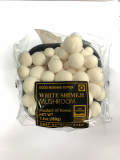
Fresh White Shimeji Mushroom
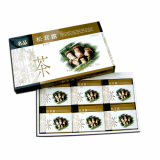
Pine Mushroom Tea
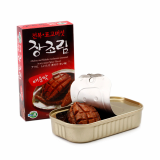
Abalone Shiitake Mushroom Simmered in Soy Sauce (spicy)
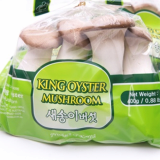
KING OYSTER MUSHROOM
FROZEN HALF SHELL OYSTER


































